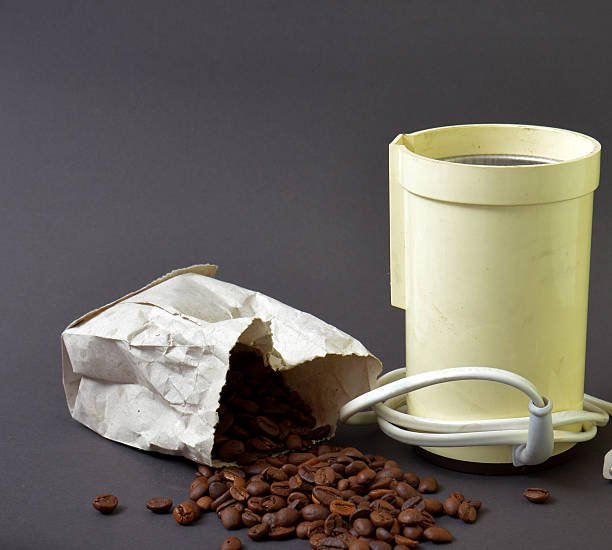Imagine waking up to the rich, aromatic smell of freshly brewed coffee. Now, think about the disappointment of taking that first sip only to realize something is off. Coffee lovers everywhere wonder, “Can coffee beans go bad?” This blog aims to answer that question and guide you on how to keep your coffee beans fresh. By the end of this post, you’ll know the signs of stale coffee, how to store your beans properly, and what to do if your coffee has lost its charm. Let’s get started on ensuring every cup you brew is pure perfection.
What Happens to Coffee Beans Over Time?
The Science of Stale Beans
Coffee beans, like all organic matter, undergo chemical changes over time. Exposure to air, moisture, and light accelerates these changes, affecting the flavor and aroma. When coffee beans go stale, they lose their vibrant taste and smell, leaving you with a flat, dull brew.
Factors That Affect Freshness
Several factors contribute to the deterioration of coffee beans:
- Air: Oxygen is the main culprit behind coffee bean oxidation.
- Moisture: Water can cause beans to become moldy and stale.
- Light: UV rays can break down the compounds that give coffee its unique flavor.
- Temperature: Extreme temperatures can speed up the aging process.
How Long Do Coffee Beans Last?
Under optimal conditions, whole coffee beans can maintain their freshness for up to six months. However, once ground, the beans start losing their flavor within a week. Therefore, it’s best to grind your beans just before brewing.
Signs Your Coffee Beans Have Gone Bad
Changes in Aroma
One of the first signs of stale coffee beans is a change in aroma. Fresh coffee beans have a strong, pleasant smell. If your beans smell musty or lack aroma altogether, it’s time to replace them.
Altered Flavor
Stale coffee has a noticeable difference in taste. Fresh beans produce a complex, vibrant flavor profile, while stale beans taste flat and lifeless. If your coffee lacks depth and richness, your beans may be past their prime.
Visual Cues
Inspect your beans for visual signs of spoilage. Fresh beans have a glossy appearance due to their natural oils. If your beans look dull and dry, they may have lost their freshness. Also, watch out for mold or discoloration, which are clear indicators of spoilage.
Storing Your Coffee Beans
The Best Containers
To keep your coffee beans fresh, store them in an airtight container. Mason jars, vacuum-sealed bags, and specialized coffee canisters are excellent options. These containers prevent air and moisture from reaching the beans, preserving their flavor and aroma.
Ideal Storage Locations
Store your coffee beans in a cool, dark place. A pantry or cupboard away from direct sunlight and heat sources is ideal. Avoid storing beans in the refrigerator or freezer, as the fluctuating temperatures can affect their quality.
Tips for Long-Term Storage
If you need to store coffee beans for an extended period, consider freezing them. Portion the beans into small, airtight bags to minimize exposure to air. When you’re ready to use them, allow the beans to thaw at room temperature before grinding and brewing.
Grinding Fresh Beans
The Importance of Freshly Ground Coffee
Grinding your coffee beans just before brewing is crucial for maintaining freshness. Pre-ground coffee loses its flavor quickly, as the increased surface area exposes more of the beans to air and moisture.
Types of Grinders
There are two main types of coffee grinders:
- Blade Grinders: These grinders are affordable and easy to use but can produce uneven grounds.
- Burr Grinders: Burr grinders offer a more consistent grind, which is essential for optimal flavor extraction.
Grinding Techniques
Adjust the grind size based on your brewing method. For example, a coarse grind is ideal for French press coffee, while a fine grind works best for espresso. Experiment with different grind sizes to find the perfect balance for your taste.
Brewing Methods That Enhance Freshness
French Press
The French press is a popular method for brewing fresh coffee. Its full-immersion technique allows for maximum flavor extraction, resulting in a rich, robust cup of coffee.
Pour-Over
Pour-over brewing involves slowly pouring hot water over coffee grounds, allowing the water to extract flavors as it passes through. This method highlights the subtle nuances of freshly ground beans.
Espresso Machine
Espresso machines force hot water through finely-ground coffee at high pressure, creating a concentrated shot of coffee. Freshly ground beans are essential for achieving the bold, intense flavor of a perfect espresso.
The Role of Fresh Beans in Specialty Coffee
Single-Origin Coffees
Single-origin coffees come from a specific region or farm, offering unique flavor profiles. Freshness is crucial for appreciating the distinct characteristics of these specialty beans.
Coffee Blends
Coffee blends combine beans from different regions to create a balanced flavor profile. Using fresh beans ensures that each component of the blend contributes to the overall taste.
Decaf Coffee
Decaf coffee undergoes a process to remove most of its caffeine content. While decaf beans can go stale like regular beans, storing them properly will help maintain their freshness and flavor.
Common Myths About Coffee Bean Freshness
Myth 1: Freezing Beans Destroys Flavor
Contrary to popular belief, freezing coffee beans can preserve their freshness if done correctly. Use airtight containers and thaw the beans before use to maintain their quality.
Myth 2: Coffee Beans Last Forever
While coffee beans don’t spoil like perishable foods, they do lose their freshness over time. Consuming stale beans results in a subpar coffee experience, so it’s essential to use them within their optimal timeframe.
Myth 3: All Coffee Beans Are the Same
Different types of coffee beans have varying shelf lives and flavor profiles. Factors such as origin, roast level, and processing method all influence the freshness and taste of the beans.
Frequently Asked Questions
How Can You Tell If Coffee Beans Are Fresh?
Fresh coffee beans have a strong aroma, a glossy appearance, and produce a vibrant, complex flavor. Stale beans, on the other hand, lack aroma, look dull and dry, and taste flat.
Is It Safe to Drink Coffee Made From Old Beans?
While it’s safe to drink coffee made from old beans, it won’t taste as good as coffee made from fresh beans. Old beans lose their flavor and aroma, resulting in a lackluster brew.
How Long Do Coffee Beans Stay Fresh After Opening?
Once opened, coffee beans stay fresh for about two to three weeks if stored properly in an airtight container in a cool, dark place.
In Conclusion
Understanding the shelf life of your coffee beans can significantly enhance your coffee-drinking experience. By recognizing the signs of stale beans and implementing proper storage techniques, you can ensure that every cup you brew is fresh and flavorful. Don’t settle for mediocre coffee—take control of your bean freshness and enjoy the best brews possible. If you’re ready to elevate your coffee game, start by investing in quality beans and storing them with care. Happy brewing!





